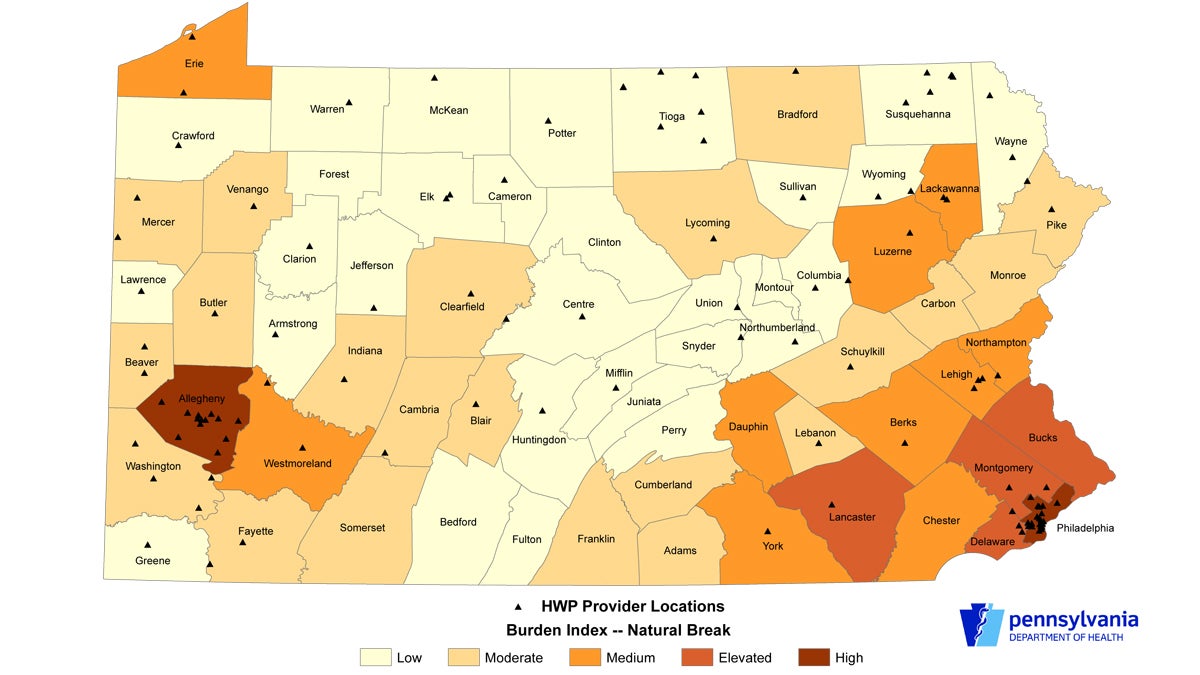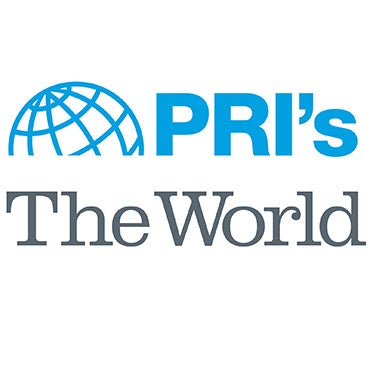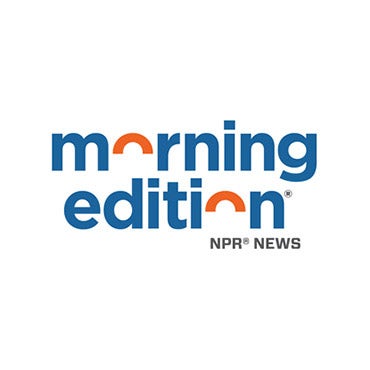Officials revise approach to bring cancer screening to women across Pa.

This image shows HealthyWoman Program (HWP) provider locations and a breast and cervical cancer burden index derived from several weighted factors, including breast and cervical cancer incidence, mortality, and late stage percentages, breast and cervical cancer risk factors, and eligible population estimates. Source: Pennsylvania Bureau of Health; HealthyWoman Program; Bureau of Health Statistics (Jeremy Zuckero, July 2013)
Mapping — and the analyses that go with it — is leading Pennsylvania health officials to new priorities as they deploy cancer-screening resources across the state.
Pennsylvania’s HealthyWoman Program has about $4 million in federal and state funds to spend on providing mammograms and Pap smears without charge each year.
The program serves uninsured and under-insured low-income Pennsylvania women ages 40 to 64, but not every county has a HealthyWoman screening site.
In the past, planners tried to be geographically democratic. The goal was to establish screening locations in all 67 counties, but that thinking is shifting.
Geographic information analyst Jeremy Zuckero says mapping breast and cervical cancer deaths and diagnoses — along with other indicators of cancer burden — has helped policymakers become more strategic.
“There are numerous counties that have elevated levels that do not currently have providers that would be nice to put one in. For example, Bucks and Chester. And Dauphin County would be a good candidate,” said Zuckero, data manager for the HealthyWoman program.
By comparison, there are six screening sites in Tioga County, but according to the analysis, the breast and cervical cancer burden in Tioga is low — among the targeted population for the HealthyWoman program.
In Southeast Pennsylvania, the Family Planning Council recruits hospitals and clinics to serve as screening sites.
Tracy Graham, Family Planning Director at the council, said it’s tough to find health providers who can offer the comprehensive care that’s required by the federal government.
“Coordinating appointments, making sure that the person received their mammogram, and then identifying what those results are and putting them in the system takes a great deal of oversight,” Graham said. “And sometimes many of the providers don’t have the staff to be able to support those kinds of efforts.”
The 130 HealthyWoman providers in Pennsylvania serve about 11,000 to 12,000 women each year before the funding runs out. That number is perhaps 7 percent to 10 percent of the number of women who are actually eligible across the state.
Joseph Burkhart, the HealthyWoman program manager, said signing on to be a provider for the free mammograms and Pap smears means agreeing to quite a bit of paperwork and reporting responsibilities, but there can be some financial benefit.
“We do reimburse our services according to Medicare rates which are a little bit higher than Medicaid,” Burkhart said.
And, he added, current providers have given him positive feedback.
“It puts their facility and organization in a good light,” he said. “They are thankful that they can serve this population.”
More on who’s eligible for the HealthyWoman program, call 1-800-215-7494
WHYY is your source for fact-based, in-depth journalism and information. As a nonprofit organization, we rely on financial support from readers like you. Please give today.

